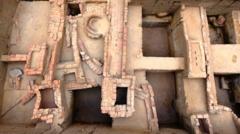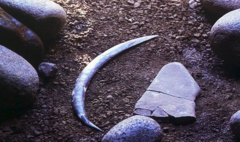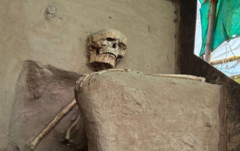Rakhaldas Banerjee, an Indian archaeologist of the early 20th century, unearthed the ancient city of Mohenjo-daro, a key site of the Indus Valley Civilization, yet his remarkable contributions have been largely forgotten amid professional disputes and personal controversies.
The Overlooked Heritage: Rakhaldas Banerjee and the Discovery of Mohenjo-daro

The Overlooked Heritage: Rakhaldas Banerjee and the Discovery of Mohenjo-daro
An exploration of Rakhaldas Banerjee, an influential figure in archaeology whose groundbreaking findings are overshadowed by controversies.
In the early 1900s, Rakhaldas Banerjee, an Indian archaeologist, made monumental contributions to the field of history through the discovery of Mohenjo-daro in present-day Pakistan. This site is considered one of the largest urban centers of the Indus Valley Civilization, known for its advanced layout and architecture. Despite his pivotal role in revealing the historical significance of the civilization, Banerjee's legacy remains marred by disputes, overshadowing his accomplishments.
Banerjee began his career with the Archaeological Survey of India (ASI) during British colonial rule, showing remarkable talent as an explorer and epigraphist. His independent search for artifacts was extensive, taking him across the Indian subcontinent. However, his challenging personality and disregard for colonial hierarchies often led to conflicts. Reports suggest that his extensive findings on Mohenjo-daro were never published due to a perceived rivalry with ASI chief John Marshall, who is more frequently credited for the discovery. This has led to calls for recognition of Banerjee's contributions, such as those from historian PK Mishra.
Born in 1885 in a wealthy Bengali family, Banerjee had a passion for history stimulated by the medieval monuments surrounding him. His academic pursuits eventually led him to the ASI, where he was promoted to a superintending archaeologist role by the age of 32. In his exploration at Mohenjo-daro, he discovered vital artifacts, including seals and coins, crucial to understanding the civilization's past. He also established connections between Mohenjo-daro and other sites like Harappa, providing insights into the civilization's expanse.
Despite his achievements, by 1924, Banerjee faced financial limitations and administrative disputes regarding his spending habits, which led to his transfer and eventual resignation from the ASI in 1927. His departure was marked by accusations of idol theft from a revered shrine, although he was later exonerated. Nevertheless, this incident contributed to his declining reputation, overshadowing his archaeological accomplishments.
After leaving the ASI, Banerjee continued in academics but faced financial struggles due to a lavish lifestyle. His sudden death in 1930 at the young age of 45 left a complex legacy of brilliance marred by controversy. Today, scholars in Bengal remember him as a significant figure in archaeology while advocating for a reevaluation of his contributions to global historical discourse.




















